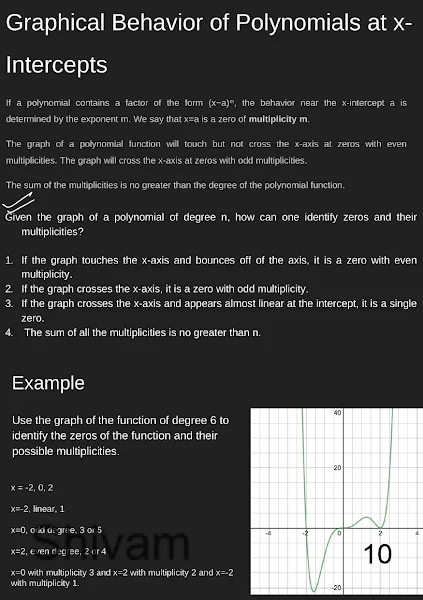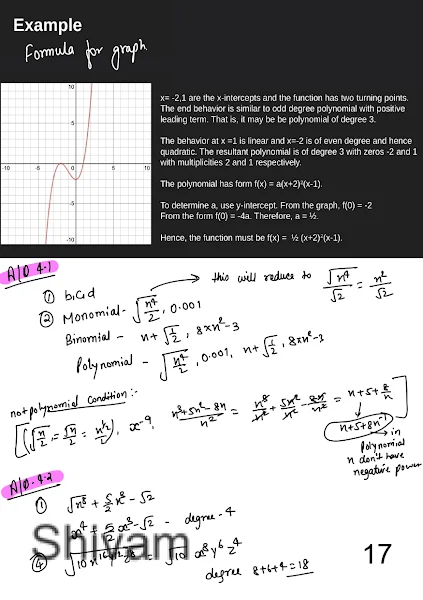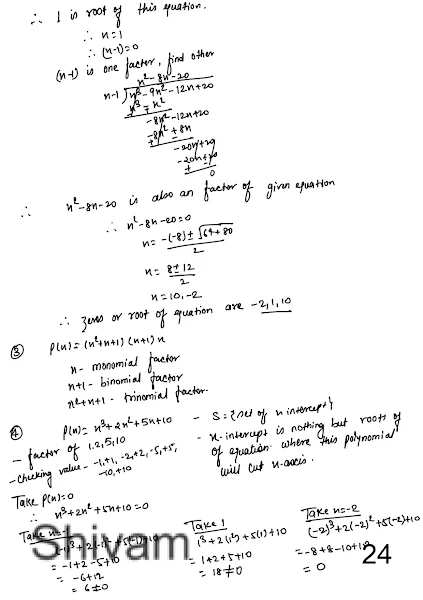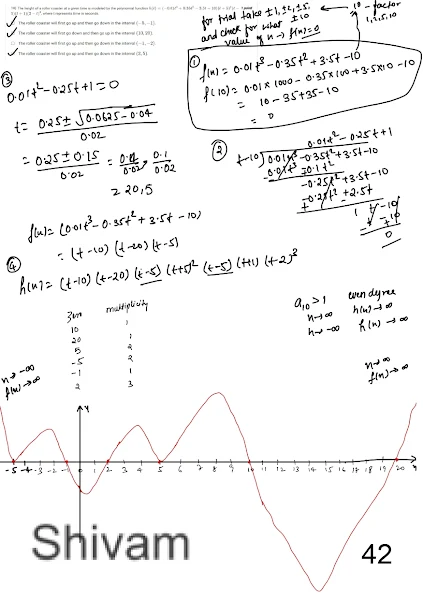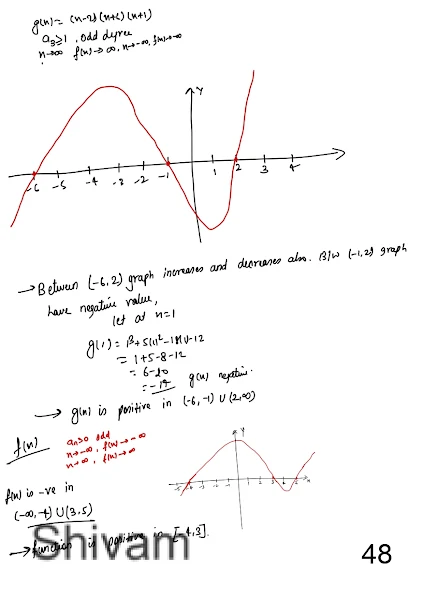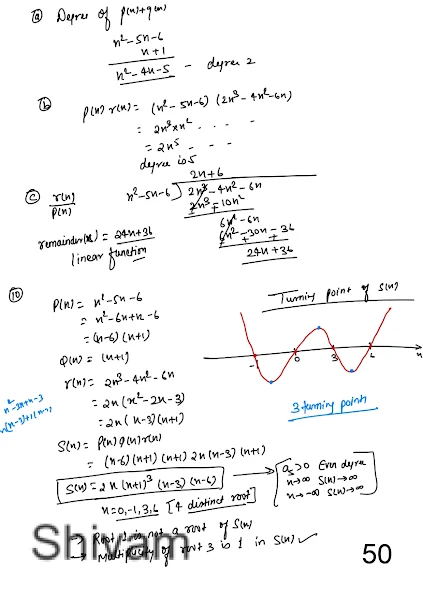📚
Polynomial Summary
Polynomial
A polynomial is an expression consisting of variables (also called indeterminates) and coefficients, that involves only the operations of addition, subtraction, multiplication, and non-negative integer exponents of variables. For example, \(3x^2 + 2x - 5\) is a polynomial.
Degree of Polynomial
The degree of a polynomial is the highest power of the variable in the polynomial. For example, in the polynomial \(4x^3 + 3x^2 + 2x + 1\), the degree is 3.
Multiplication of Polynomials
To multiply two polynomials, each term in the first polynomial is multiplied by each term in the second polynomial. For example:
| (2x + 3)(x - 4) | = | (2x * x) + (2x * (-4)) + (3 * x) + (3 * (-4)) |
| = | 2x2 - 8x + 3x - 12 | |
| = | 2x2 - 5x - 12 |
(2x + 3)(x - 4) =
Division of Polynomials
To divide polynomials, we use polynomial long division or synthetic division. For example, dividing \(2x^3 + 3x^2 - x - 5\) by \(x - 1\):
\[ \begin{array}{r|rrrr} x-1 & 2x^3 & +3x^2 & -x & -5 \\ \hline & 2x^2 & +5x & +4 & \\ \end{array} \]
x-intercept
The x-intercepts of a polynomial are the points where the graph of the polynomial crosses the x-axis. These are the solutions to the equation \(P(x) = 0\).
y-intercept
The y-intercept of a polynomial is the point where the graph of the polynomial crosses the y-axis. This is the value of the polynomial when \(x = 0\).
Zero of Polynomial
The zeros of a polynomial are the values of \(x\) for which the polynomial equals zero. These are also the x-intercepts of the polynomial.
Factor of Polynomial
The factors of a polynomial are the polynomials that multiply together to give the original polynomial. For example, \(x^2 - 5x + 6\) factors to \((x - 2)(x - 3)\).
Multiplicity
The multiplicity of a root of a polynomial is the number of times that root appears. For example, in \((x - 2)^3\), the root \(x = 2\) has a multiplicity of 3.
Odd Multiplicity
If a polynomial has a root with an odd multiplicity, the graph of the polynomial will cross the x-axis at that root.
Even Multiplicity
If a polynomial has a root with an even multiplicity, the graph of the polynomial will touch the x-axis at that root but not cross it.
Turning Point
The turning points of a polynomial are the points where the graph changes direction. A polynomial of degree \(n\) can have at most \(n-1\) turning points.
End Behavior of Polynomial
The end behavior of a polynomial describes how the graph behaves as \(x\) approaches positive or negative infinity. For example, the end behavior of \(f(x)=x^3\) is that as \(x \to \infty\), \(y \to \infty\) and as \(x \to -\infty\), \(y \to -\infty\).









